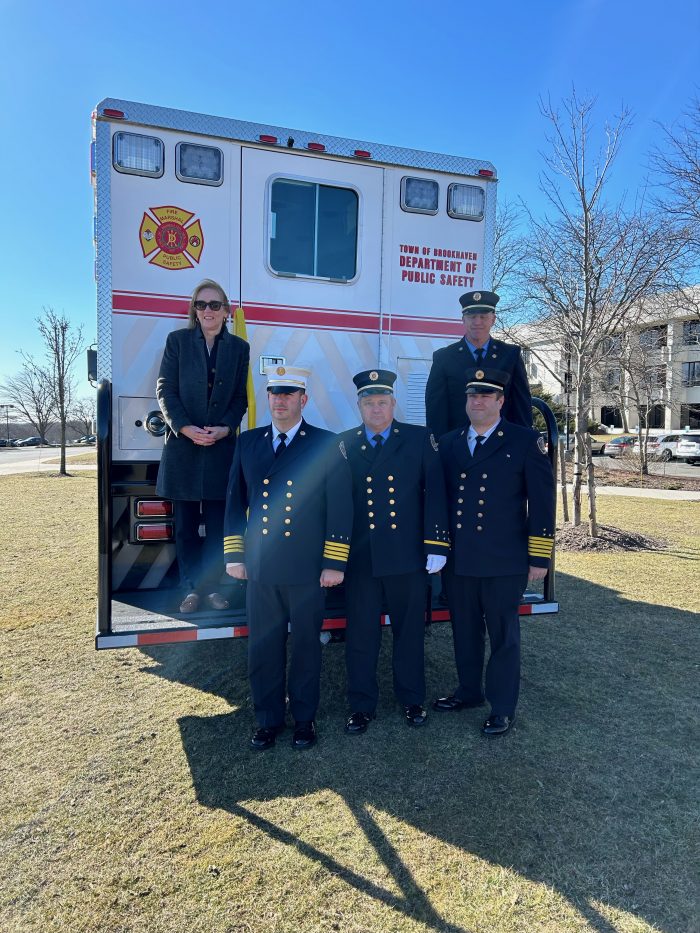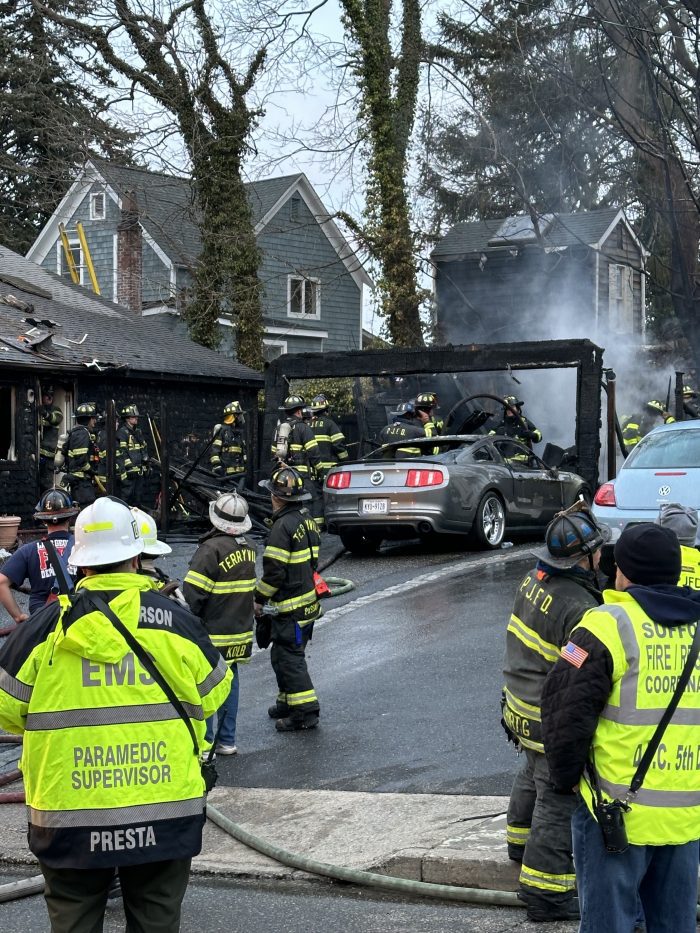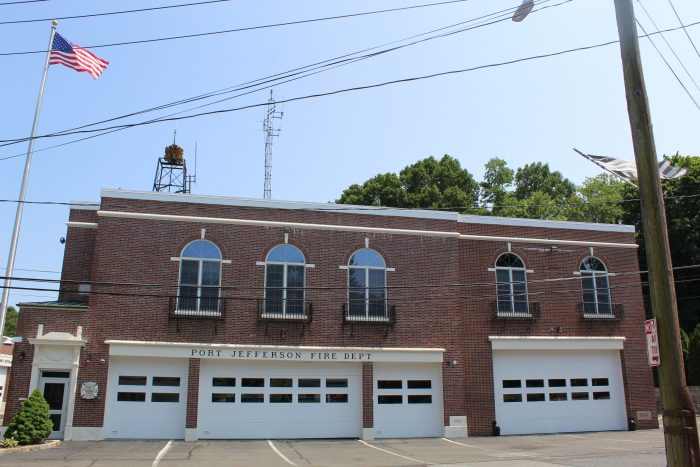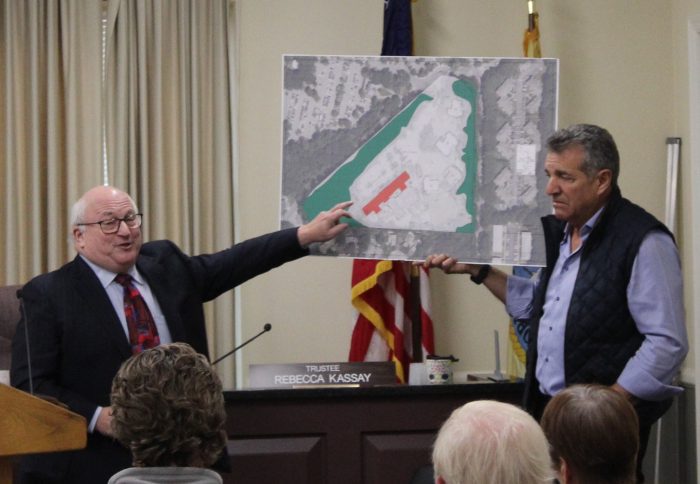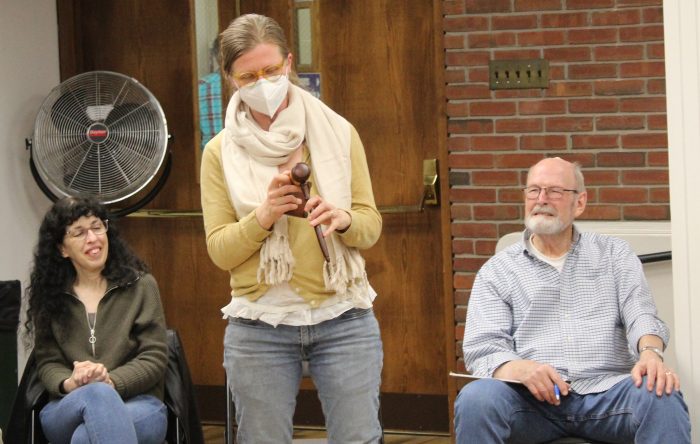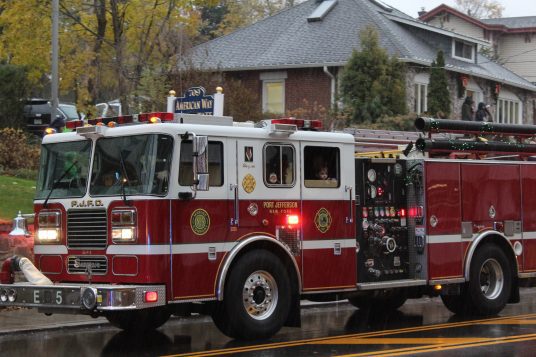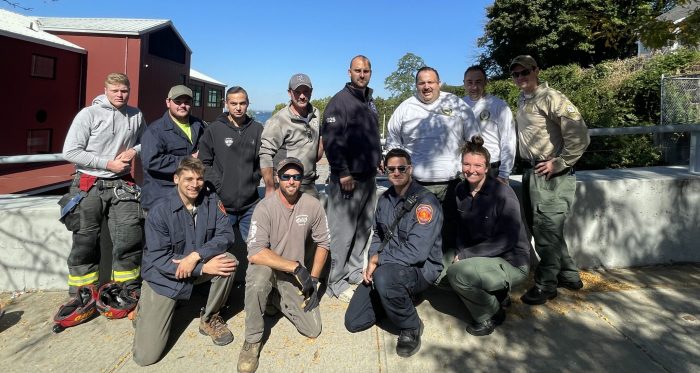By Lynn Hallarman
At 10 p.m. on Sunday, Aug. 18, Christian Neubert, second assistant chief for the Port Jefferson Fire Department, responded to what seemed like a routine call. The skies over Port Jefferson village were clear. But shortly after that, the village was caught unaware by an unrelenting downpour that would last nearly six hours.
“Once the rain started, we had very few moments of it letting up,” Neubert said in a phone interview with TBR News Media. The storm’s intensity caught everyone off guard.
Then, the firehouse started to flood. The station’s dispatchers could see through surveillance cameras that water was collecting in the back parking lot and the storm drains were slowing as water began to flow in reverse.
Dangerous conditions

Neubert recalled that at 11:20 p.m., Chief Anthony Barton notified all department members to respond to the firehouse to assist with worsening flood conditions. The fire trucks were moved out of the station, but rapidly rising waters filled with sewage and contaminants prevented members from moving gear and other equipment.
Soon, the calls for help started to come in. From 11 p.m. until 3 a.m., firefighters responded to 11 urgent water rescues as vehicles became trapped in rising floodwaters. Rescuers worked in pairs tethered by a rope, with one firefighter in the water, the other on solid ground. This strategy ensured that no one was swept away or sucked into an open manhole.
“The most dangerous aspect of flood rescues is to our team. As the drainage system in the village backs up, the manhole covers will literally blow off. That night, there were open manhole covers throughout the village,” Neubert said.
No firefighters or rescued members of the public were hurt that night, but people needed to be transported to the Village Grocery’s parking lot, where they could eventually be picked up by someone. The fire station, now flooded with 3 feet of water, could not be used to stage the station’s emergency response or serve as a temporary shelter for flood victims.
Complicating matters, firefighters were dispatched to respond to several fire alarms, which were triggered, it turns out, by floodwaters.
With the fire station out of commission, rescuers were forced to rely on radio communication while sitting in their trucks in torrential rain. The constant pelting on the vehicles made conversations hard to hear over the radio. And it was dark.
For hours, the fire department battled two emergencies at once: the flooding of their station and responding to calls for help from community members.
Storm surge vs. flash rain

Neubert recounted the difference in conditions during Hurricane Sandy in 2012 compared to this rain event. He explained that Sandy’s flooding resulted from surging tides in a slow rise.
“We had time to prepare,” he said. “We took the fire trucks out of the building and staged them throughout various village locations. All the firefighting gear was moved to very high ground, well ahead of time.”
This time, however, was different — a sudden and unexpected deluge is harder to prepare for. The worst flooding of the fire station in recent years has resulted from heavy rainfall over a short period, as in 2018, 2021 and now 2024.
This most recent storm was the most damaging. “Our biggest loss was the machine we use to fill our air bottles, with the replacement cost nearing $100,000,” Neubert said. “Our contaminated gear needed professional cleaning.” The entire ground floor of the building required an extensive cleanup, and repairs are still being made to the walls and floors.
The fire department has federal flood insurance to absorb most of the cost of the cleanup. However, what cannot be accounted for are the person-hours devoted to resolving a multitude of logistical complications in the flood’s aftermath.
“It’s the ripple effect on operations that are most challenging,” Neubert said. While he emphasized that the response to community emergencies is not impacted, they temporarily need to rely on neighboring fire departments to fill their air bottles and host training events.
“And the community may forget our firefighters, about 100, who are all volunteers, live in the village and work full-time jobs,” he said.
The fire station sits in a floodplain
This reporter went on a three-hour tour of the downtown flood basin with former village mayor and longtime firefighter Mike Lee. Many years ago, the salt marsh was slowly filled in to accommodate new construction, disrupting the natural water management between the harbor and the higher ground. Now, much of the runoff flows into an overwhelmed culvert system, worsening flooding and putting additional stress on critical infrastructure such as the firehouse.
“The town, when first developed, was situated above the salt marsh, not on top of it,” Lee said. “The original Main Street was what is now East Main Street,” he said as we walked downhill toward the Gap parking lot.
The flooding problem is compounded by frequent heavy rainstorms related to climate change. The fire station sits atop a high-water table, once the salt marsh.
Moving the station?
“I do know for certainty, there is not another fire department in Suffolk County that floods,” Neubert said.
But he chuckled when asked about moving the fire station. “We would if it was realistic,” he said. It is not from want of trying, he pointed out.
“Find me an affordable 2 1/2-acre available piece of flat property within the boundaries of our 3-mile fire district that is not too near residential housing and is close enough so the response time to an emergency is not increased,” he said.
And this wish doesn’t include the cost of a new building.
According to Neubert, to preserve an ideal response time, a new firehouse would need to be situated in the fire district’s central geographic location, somewhere in the vicinity of Belle Terre Road and Myrtle Avenue.
For now, the fire department is doing everything it can to mitigate flood damage. “We are using FEMA money to install flood doors,” he said. “All the radio-server equipment has been moved to the second floor.”
The goal, he reflected, is to make sure the department is not fighting too many battles at once.
The Port Jefferson Civic Association is actively working to raise community awareness and build local support for the fire department, as the department considers options to address the flooding issue long term.
“Flooding is our greatest challenge,” Ana Hozyainova, president of the civic, said. “Yet, we’re not making strategic decisions as a community to help safeguard a vital asset — the fire department.”
“Their job is to protect our property, livelihoods and lives. The danger is that, eventually, their own crisis could grow so large that they won’t be able to respond to ours,” she added.


